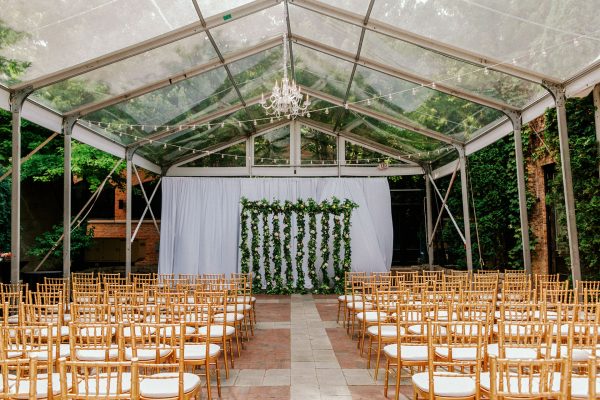Tips to Keep Your Food Safe at Your Outdoor Wedding Reception
When planning an outdoor wedding, it’s important to consider the food safety implications. Here are a few tips to help make sure your guests can enjoy their food without worrying about bacteria or other contaminants. Planning is crucial, so start with a solid food safety plan!
Safe wedding food: tips to keep your guests happy and tummy full
Weddings are a joyous occasion, but if you’re planning an outdoor reception, there are a few things you need to keep in mind to make sure your food is safe for your guests. Here are some tips:
 Keep hot food hot and cold food cold. This seems like a no-brainer, but ensuring that all food is kept at the appropriate temperature is important. No one wants lukewarm soup or melted ice cream, so invest in some good coolers and heating elements to keep everything where it should be.
Keep hot food hot and cold food cold. This seems like a no-brainer, but ensuring that all food is kept at the appropriate temperature is important. No one wants lukewarm soup or melted ice cream, so invest in some good coolers and heating elements to keep everything where it should be.- Make sure all surfaces are clean. If you have an outdoor reception, there will be plenty of surfaces for guests to put their plates and cups down on. Ensure all these surfaces are clean before the food is brought out. No one wants to eat off a dirty table!
- Keep an eye on the bugs. If you’re outdoors, there’s always the risk of bugs getting into the food. So be sure to keep an eye out and remove any you see. You might also consider using some bug repellent around the food area.
- Don’t forget the sunscreen! This is especially important if you have an outdoor summer reception. Guests will be out in the sun for extended periods, so make sure they have sunscreen available to prevent them from getting too much sun exposure.
- Have a backup plan. If you’re planning an outdoor reception, it’s always a good idea to have a backup plan in case of bad weather. For example, have a tent or other covered area available in case it starts to rain or gets too hot for guests to be comfortable.
Following these tips will help ensure that your outdoor wedding reception is safe and enjoyable for all!
Ways to keep food hot & cold at a wedding reception
At a wedding reception, it is important to keep hot food hot and cold food cold. This can be done by using chafing dishes, slow cookers, and ice chests.
Chafing dishes are a great way to keep hot food hot. They are typically made of metal and have a heat source underneath them. This will keep food warm for several hours.

Slow cookers are another great option for keeping hot food hot. They work by slowly cooking the food over low heat. This prevents the food from drying out or becoming overcooked.
Ice chests are the best option for keeping cold food cold. They are typically made of plastic or metal and have a lid that seals in the cold air. Ice chests can keep food cold for several hours.
When using these methods to keep food hot or cold, it is important to monitor the temperature of the food. This can be done by using a food thermometer.
It is also important to make sure that the food is not left out for too long. For example, hot food should be served within two hours of being cooked, and cold food should be served within four hours of refrigeration.






